Marine Life Categories
Explore the diverse world of marine life through our comprehensive categories. Each category represents a unique group of ocean creatures with their own fascinating characteristics and habitats.
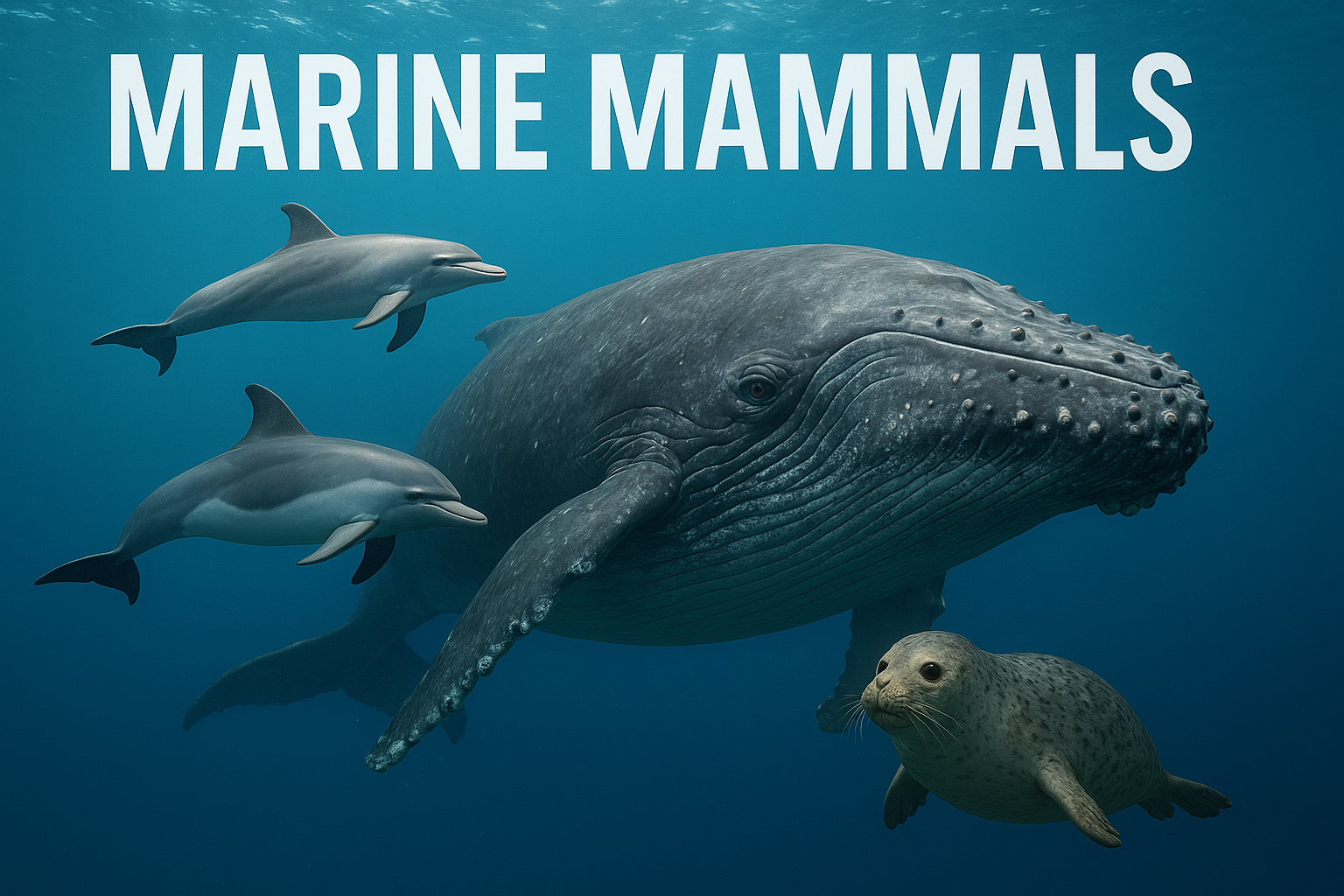
Mammals
Marine mammals are warm-blooded vertebrates that live in or near the ocean. They include whales, dolphins, seals, and other creatures that have adapted to life in the water.
Key Characteristics
- Warm-blooded
- Breathe air
- Give birth to live young
- Nurse their young

Sharks
Sharks are a diverse group of fish characterized by their cartilaginous skeletons, five to seven gill slits, and pectoral fins not fused to their heads.
Key Characteristics
- Cartilaginous skeleton
- Multiple rows of teeth
- Electroreception
- Lateral line system

Fish
Fish are aquatic vertebrates that breathe through gills and have fins for swimming. They are the most diverse group of vertebrates, with over 30,000 species.
Key Characteristics
- Gills for breathing
- Fins for movement
- Scales
- Swim bladder
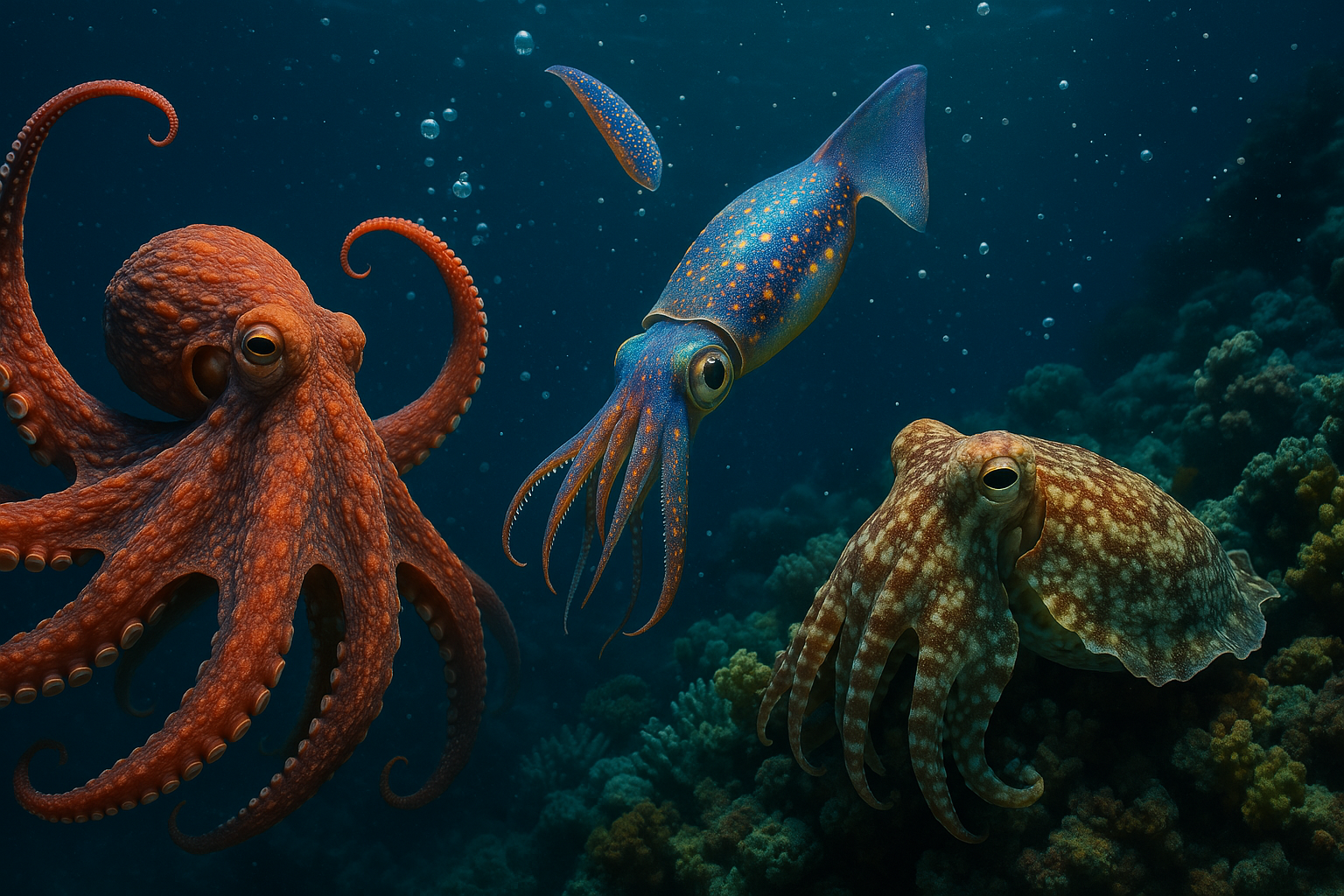
Cephalopods
Cephalopods are a class of mollusks that include octopuses, squids, and cuttlefish. They are known for their intelligence, complex behaviors, and ability to change color.
Key Characteristics
- Tentacles
- Beak
- Complex eyes
- Color-changing ability
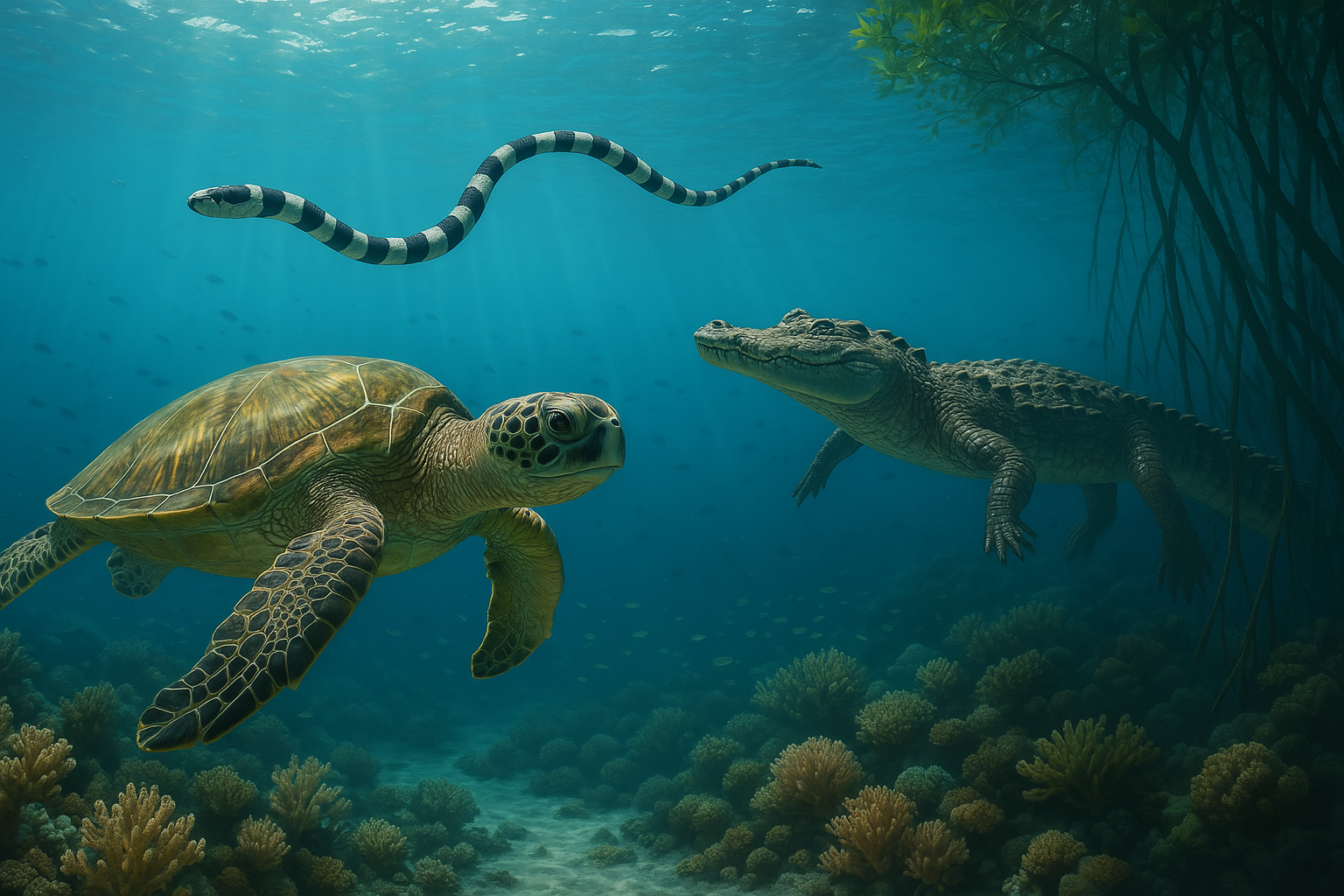
Reptiles
Marine reptiles are cold-blooded vertebrates that have adapted to life in the ocean. They include sea turtles, sea snakes, and some crocodilians.
Key Characteristics
- Cold-blooded
- Scaly skin
- Lay eggs
- Breathe air

Birds
Marine birds are adapted to life at sea, with special features for swimming, diving, and catching fish.
Key Characteristics
- Feathers
- Wings
- Beaks
- Waterproof plumage
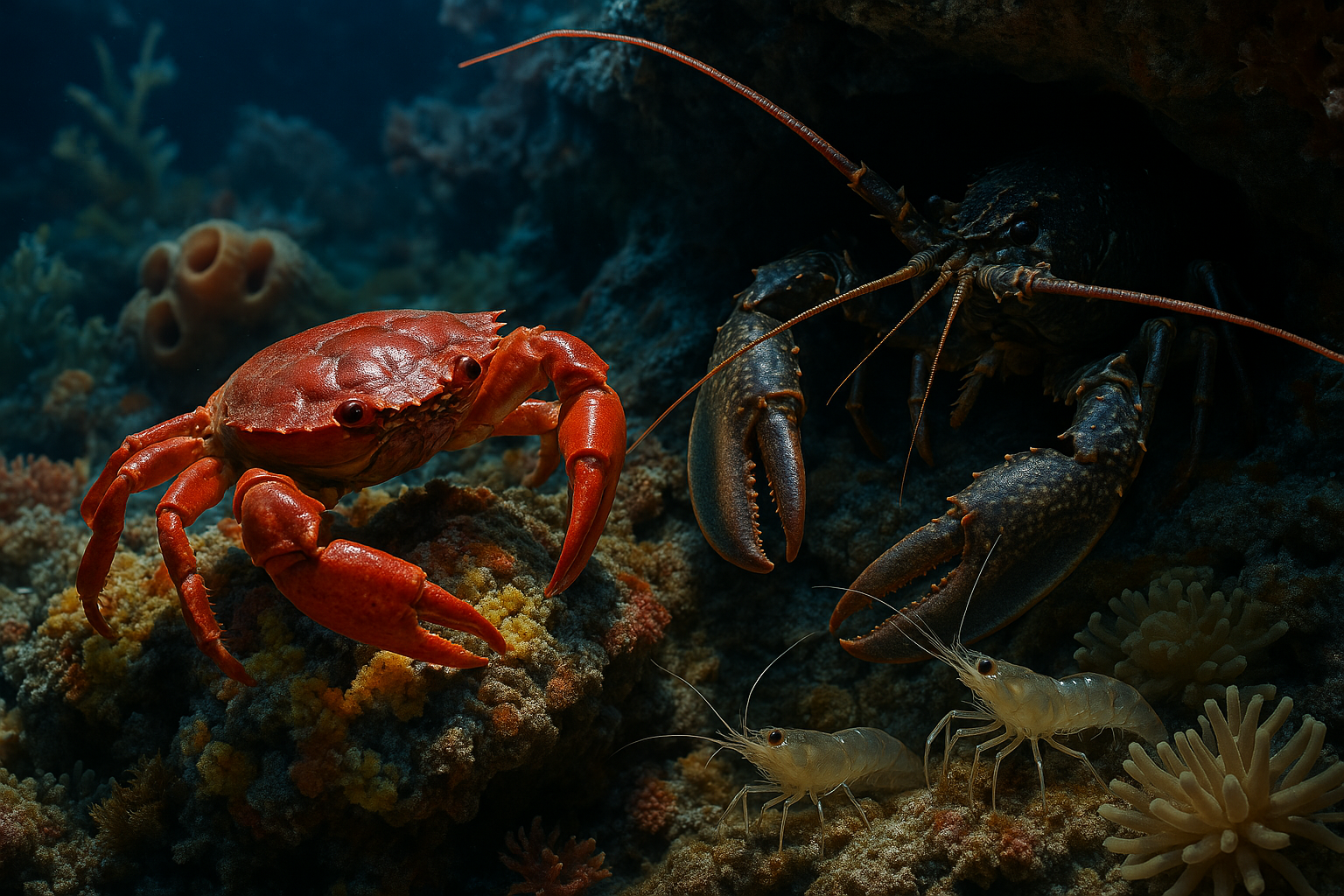
Crustaceans
Crustaceans are arthropods with hard exoskeletons and jointed appendages. They include crabs, lobsters, shrimp, and many smaller species.
Key Characteristics
- Hard exoskeleton
- Jointed legs
- Compound eyes
- Two pairs of antennae
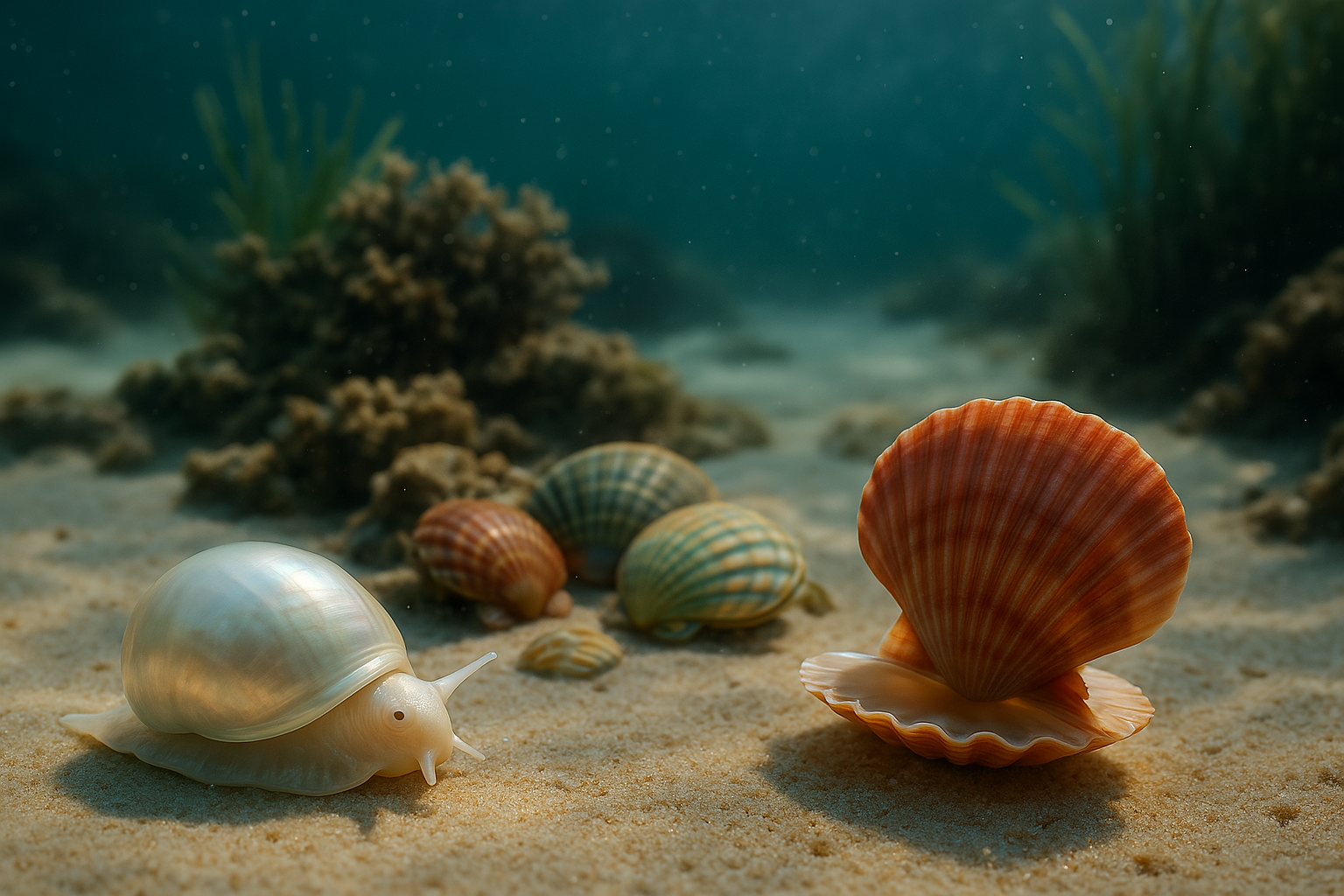
Mollusks
Mollusks are a diverse group of invertebrates that include snails, clams, and other shelled creatures. They have soft bodies and often produce hard shells.
Key Characteristics
- Soft body
- Often have shells
- Muscular foot
- Mantle
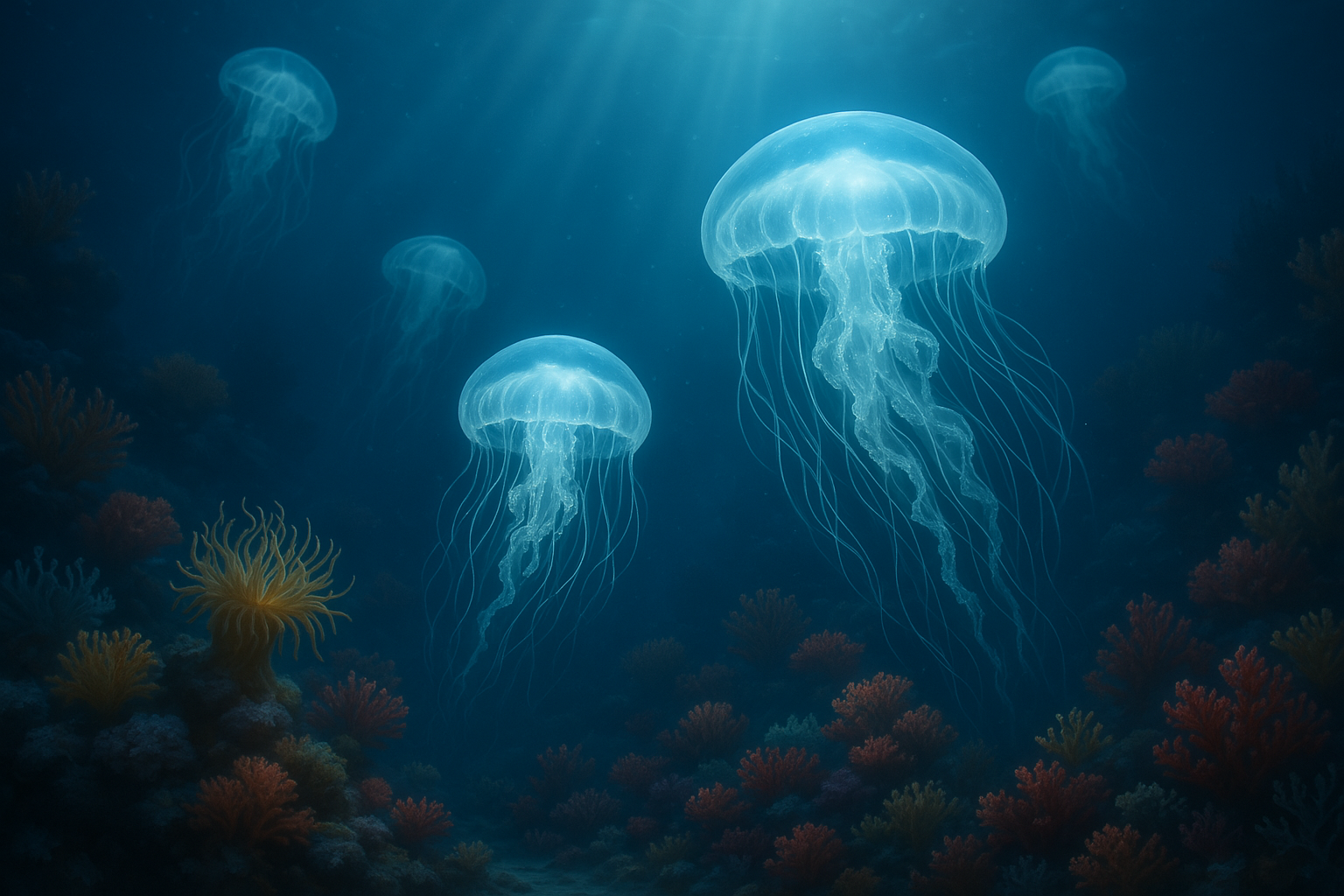
Jellyfish-Cnidarians
Cnidarians are a group of aquatic animals that include jellyfish, corals, and sea anemones. They are characterized by their stinging cells and radial symmetry.
Key Characteristics
- Stinging cells
- Radial symmetry
- Simple nervous system
- Gelatinous body
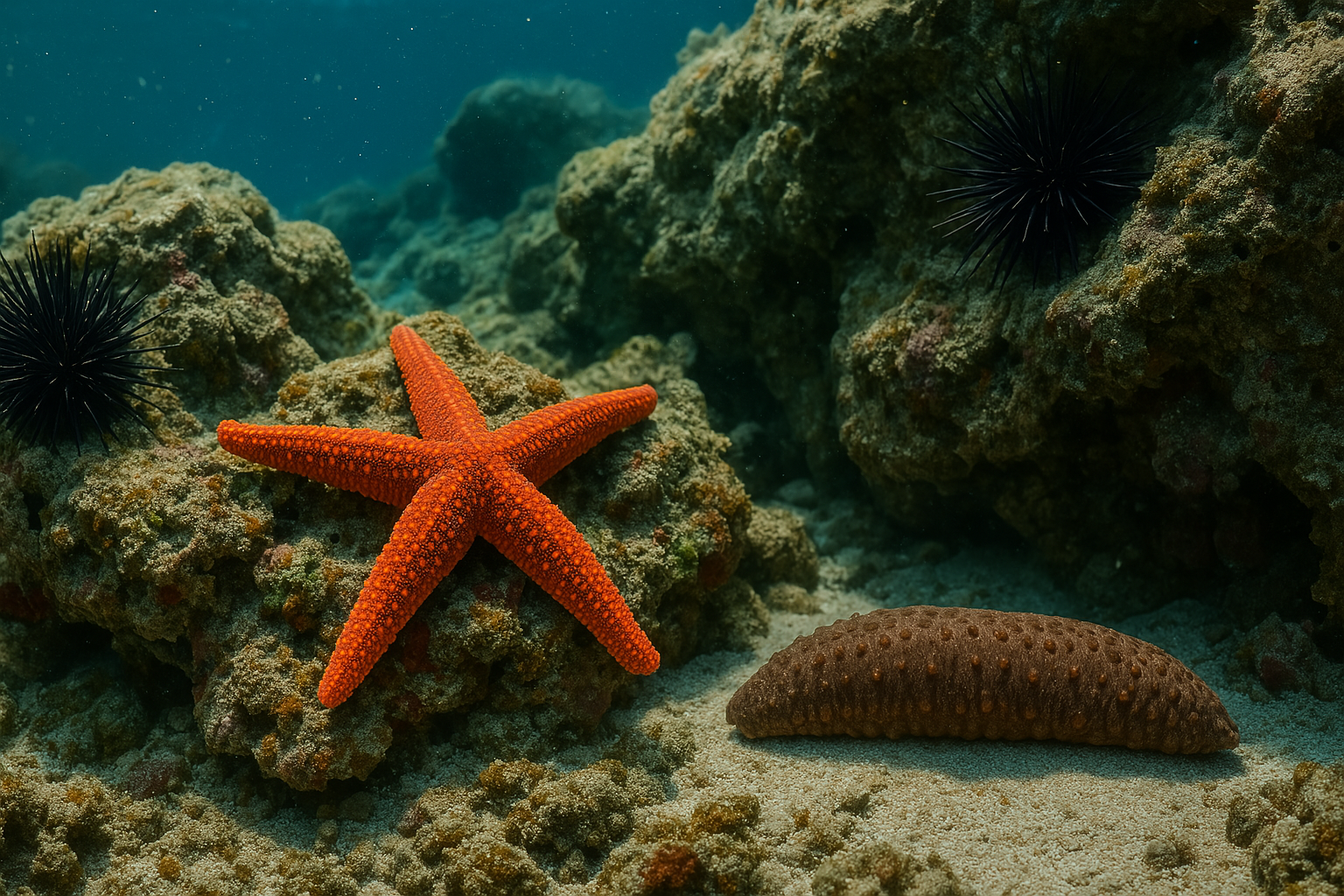
Echinoderms
Echinoderms are marine animals characterized by their radial symmetry and spiny skin. They include starfish, sea urchins, and sea cucumbers.
Key Characteristics
- Radial symmetry
- Spiny skin
- Water vascular system
- Tube feet
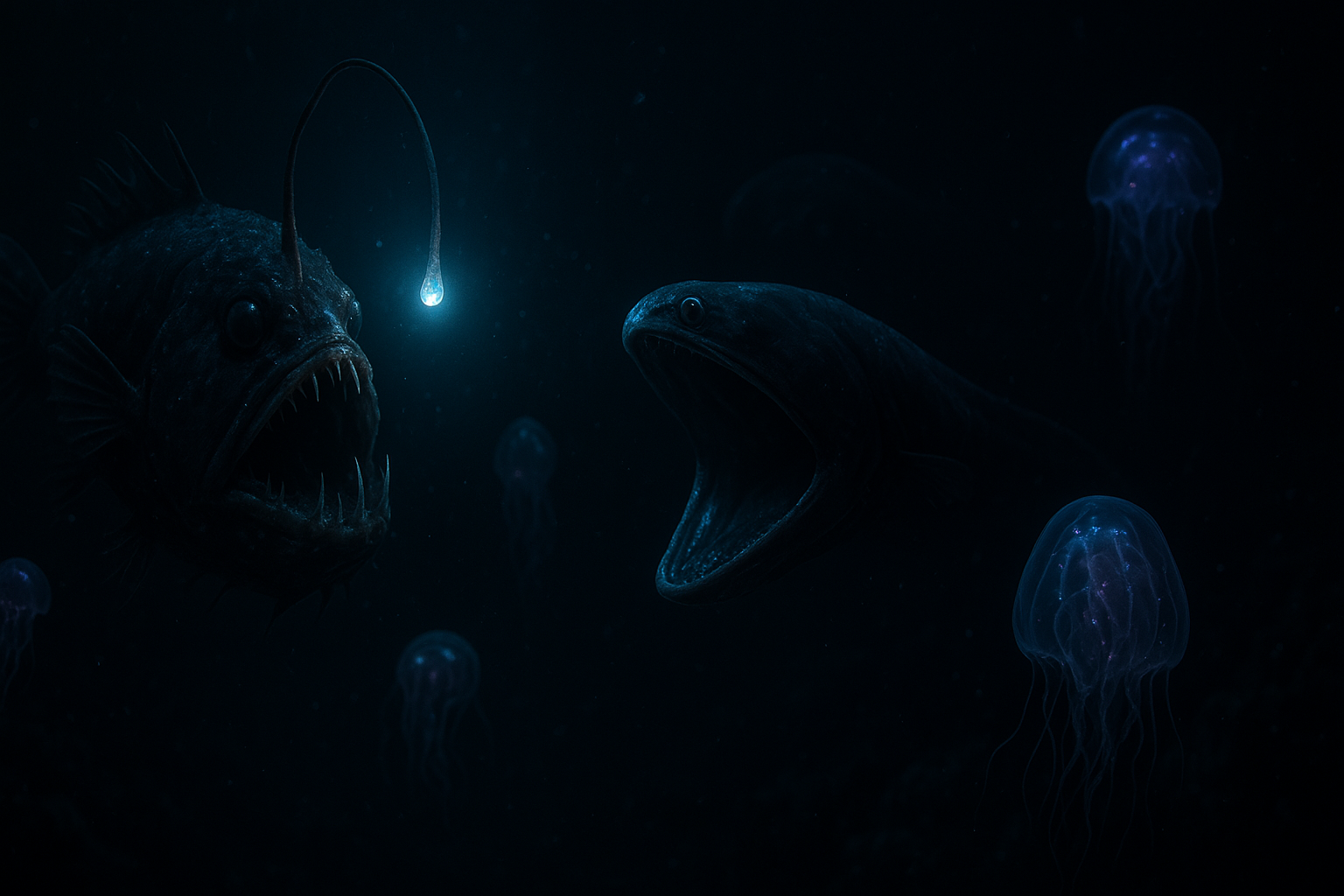
Deep Sea Creatures
Deep sea creatures are adapted to life in the extreme conditions of the deep ocean, including high pressure, low temperature, and complete darkness.
Key Characteristics
- Bioluminescence
- Large mouths
- Small eyes or no eyes
- Pressure adaptation
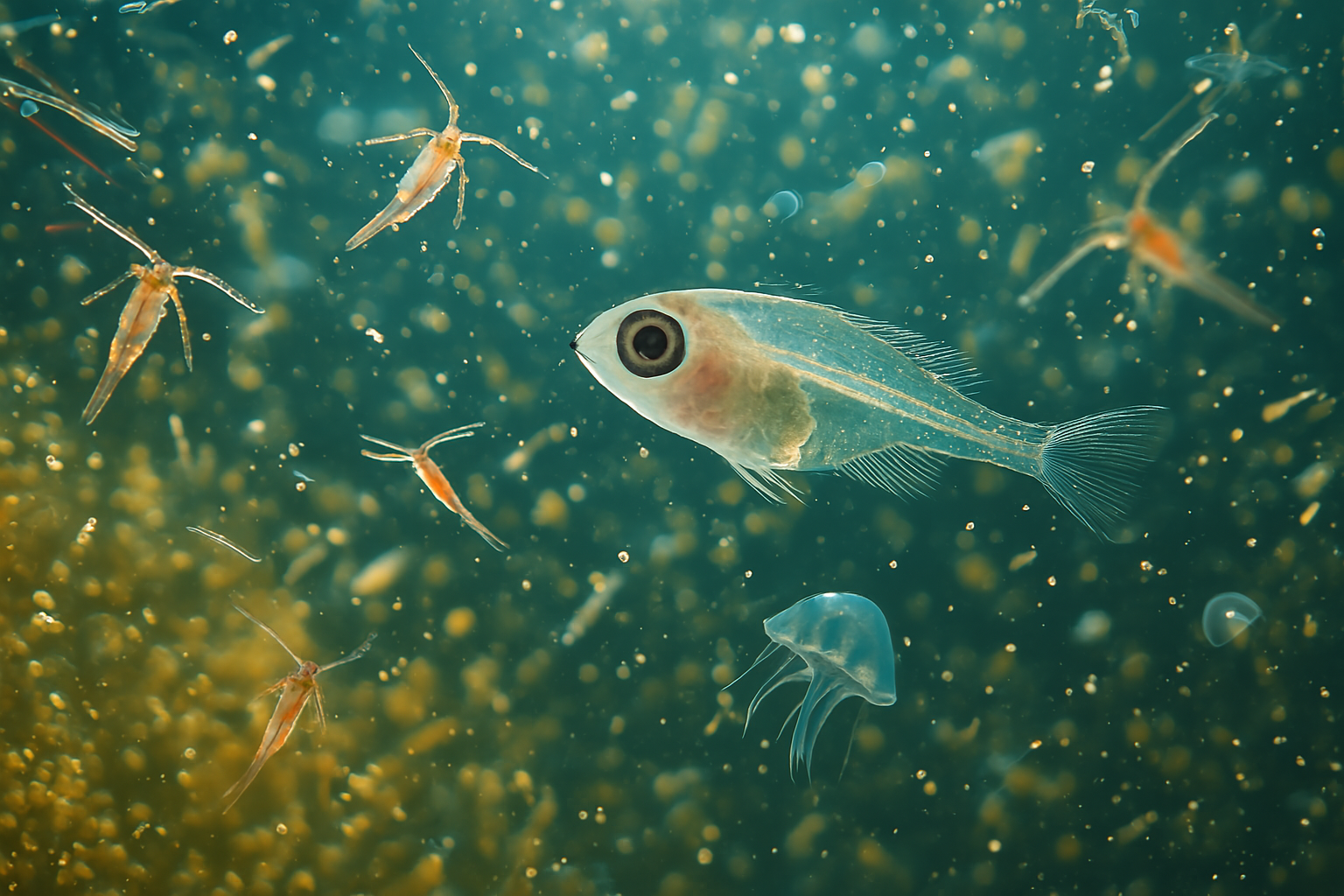
Small Marine Life
Small marine life includes microscopic and small organisms that form the base of the ocean food web. They are essential for marine ecosystems.
Key Characteristics
- Small size
- High abundance
- Important food source
- Diverse forms
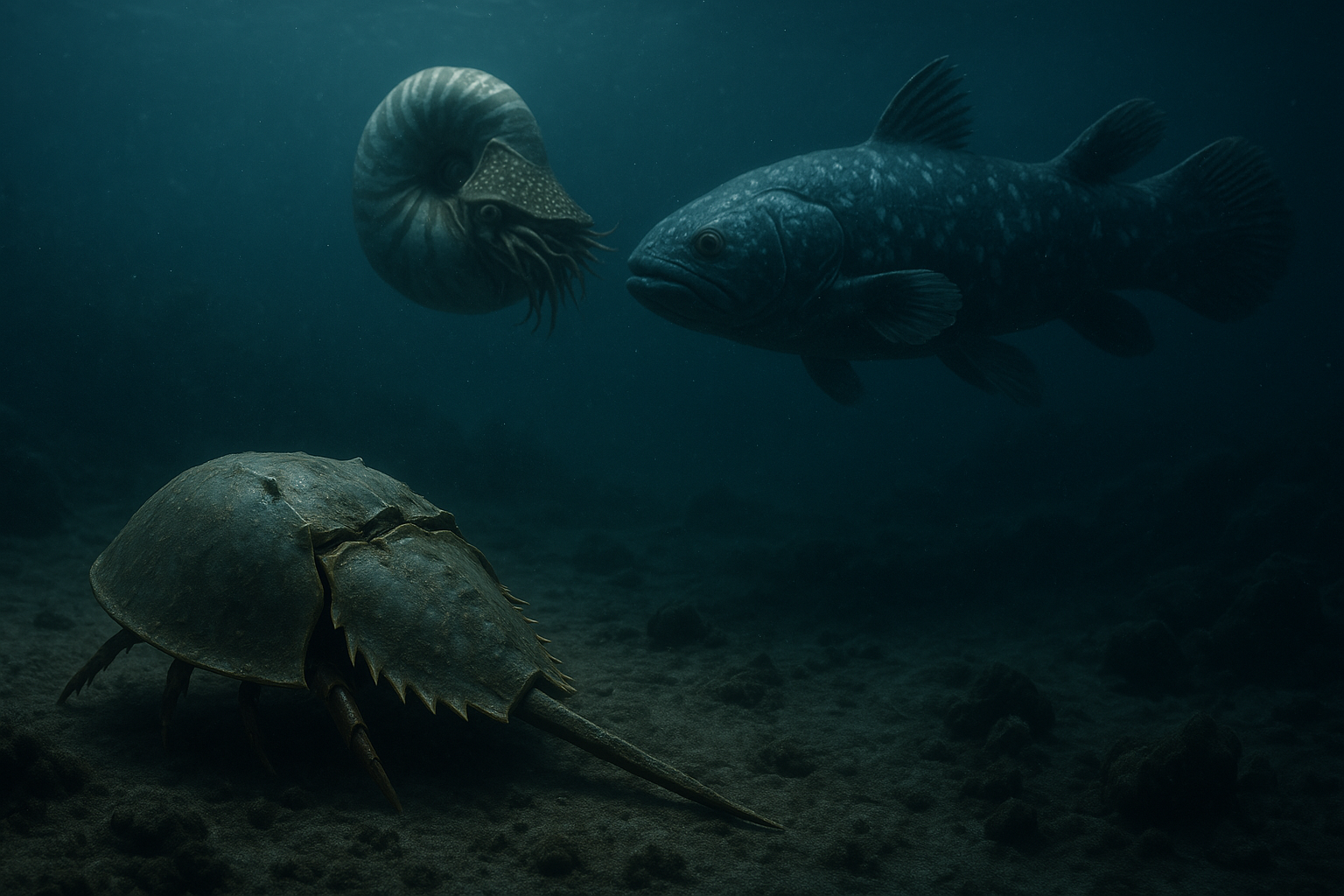
Ancient-Primitive
Ancient and primitive marine creatures are living fossils that have changed little over millions of years. They provide insights into early vertebrate evolution.
Key Characteristics
- Ancient lineage
- Primitive features
- Limited evolutionary change
- Unique adaptations
